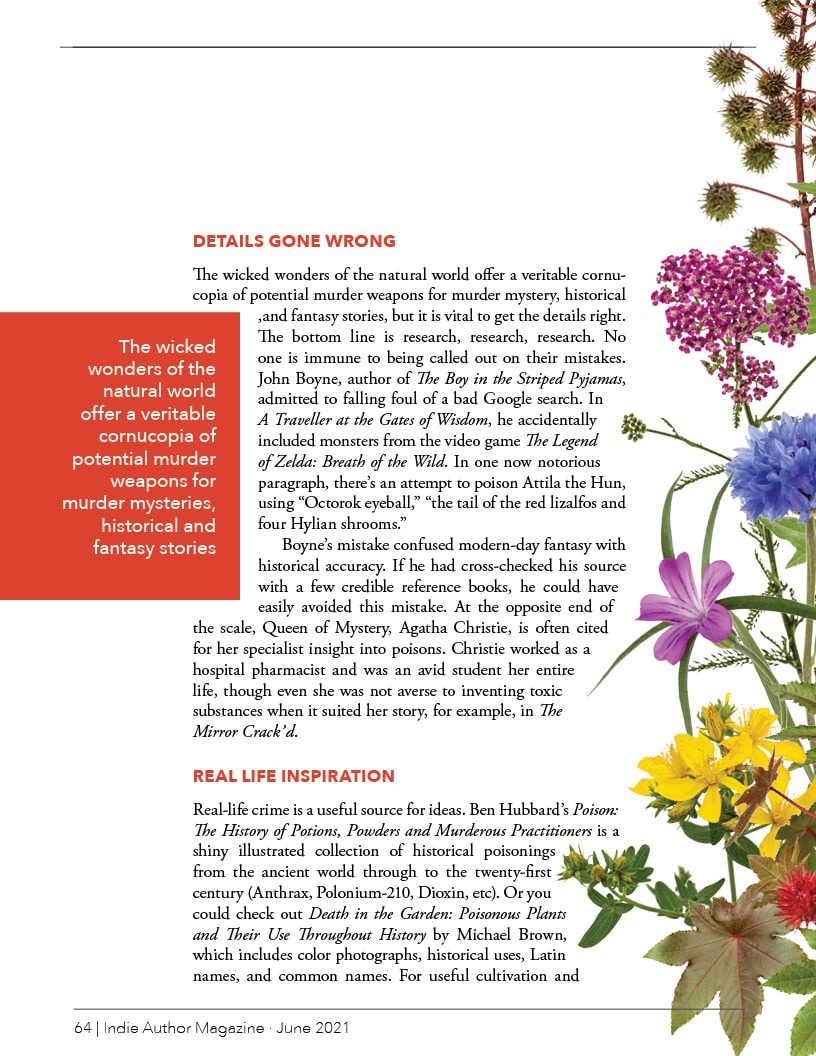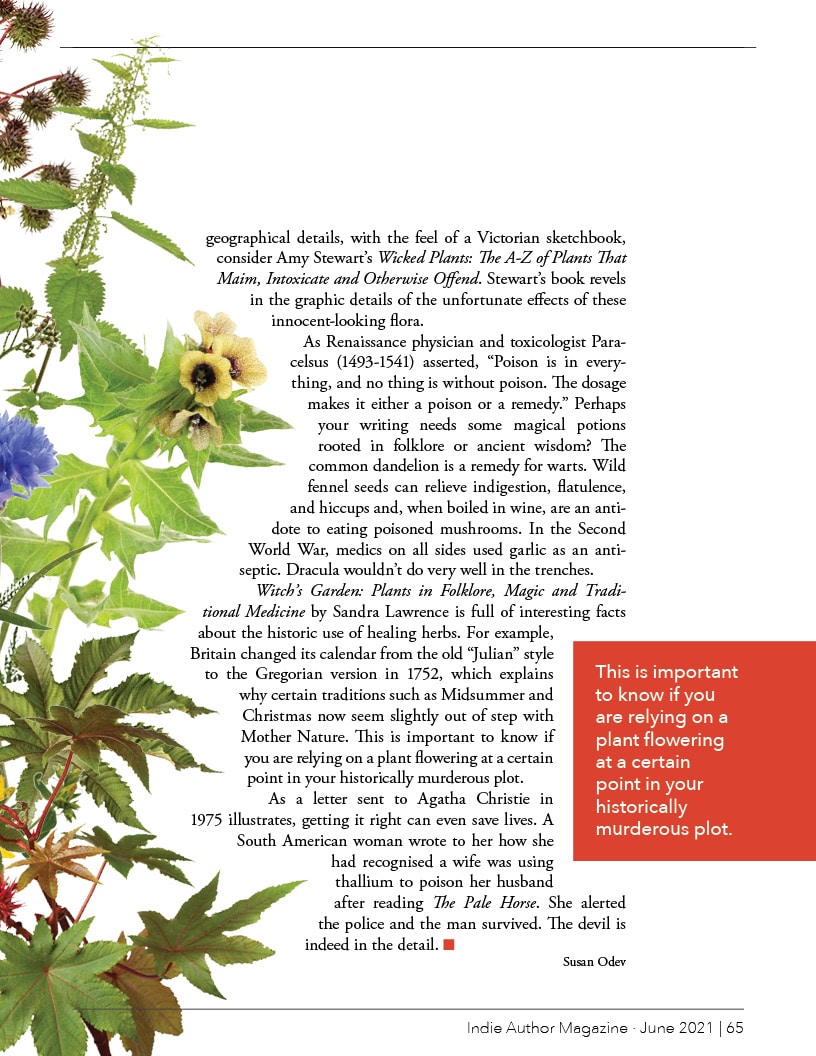
Alfred Hitchcock famously said, “I think everyone enjoys a nice murder, provided he is not the victim.”
In reality, there is no such thing as a nice murder or a perfect murder but, in writing, there can be the “right” murder. The death that best suits the victim’s or killer’s character, situation, motives, and place in time.
The method of death should always be an important consideration and the answers to the following questions will help you satisfy the reader’s curiosity.
- Is it viewed as a mercy killing?
- Does the killer want to exact revenge?
- Is it a murder of convenience?
- Will it be a messy, violent crime of passion or a cold, calculated remote affair?
- What resources does the killer have available?
- Do they need special access or a certain skill or knowledge?
These questions become even more pertinent when choosing death by poison.
Details Gone Wrong
The wicked wonders of the natural world offer a veritable cornucopia of potential murder weapons for murder mystery, historical ,and fantasy stories, but it is vital to get the details right.
The bottom line is research, research, research. No one is immune to being called out on their mistakes. John Boyne, author of The Boy in the Striped Pyjamas, admitted to falling foul of a bad Google search. In A Traveller at the Gates of Wisdom, he accidentally included monsters from the video game The Legend of Zelda: Breath of the Wild. In one now notorious paragraph, there’s an attempt to poison Attila the Hun, using “Octorok eyeball,” “the tail of the red lizalfos and four Hylian shrooms.”
Boyne’s mistake confused modern-day fantasy with historical accuracy. If he had cross-checked his source with a few credible reference books, he could have easily avoided this mistake.
At the opposite end of the scale, Queen of Mystery, Agatha Christie, is often cited for her specialist insight into poisons. Christie worked as a hospital pharmacist and was an avid student her entire life, though even she was not averse to inventing toxic substances when it suited her story, for example, in The Mirror Crack’d.
Real Life Inspiration
Real-life crime is a useful source for ideas. Ben Hubbard’s Poison: The History of Potions, Powders and Murderous Practitioners is a shiny illustrated collection of historical poisonings from the ancient world through to the twenty-first century (Anthrax, Polonium-210, Dioxin, etc). Or you could check out Death in the Garden: Poisonous Plants and Their Use Throughout History by Michael Brown, which includes color photographs, historical uses, Latin names, and common names.
For useful cultivation and geographical details, with the feel of a Victorian sketchbook, consider Amy Stewart’s Wicked Plants: The A-Z of Plants That Maim, Intoxicate and Otherwise Offend. Stewart’s book revels in the graphic details of the unfortunate effects of these innocent-looking flora.
As Renaissance physician and toxicologist Paracelsus (1493-1541) asserted, “Poison is in everything, and no thing is without poison. The dosage makes it either a poison or a remedy.”
Perhaps your writing needs some magical potions rooted in folklore or ancient wisdom? The common dandelion is a remedy for warts. Wild fennel seeds can relieve indigestion, flatulence, and hiccups and, when boiled in wine, are an antidote to eating poisoned mushrooms. In the Second World War, medics on all sides used garlic as an antiseptic. Dracula wouldn’t do very well in the trenches.
Witch’s Garden: Plants in Folklore, Magic and Traditional Medicine by Sandra Lawrence is full of interesting facts about the historic use of healing herbs. For example, Britain changed its calendar from the old “Julian” style to the Gregorian version in 1752, which explains why certain traditions such as Midsummer and Christmas now seem slightly out of step with Mother Nature. This is important to know if you are relying on a plant flowering at a certain point in your historically murderous plot.
As a letter sent to Agatha Christie in 1975 illustrates, getting it right can even save lives. A South American woman wrote to her how she had recognized a wife was using thallium to poison her husband after reading The Pale Horse. She alerted the police and the man survived.
The devil is indeed in the detail.



